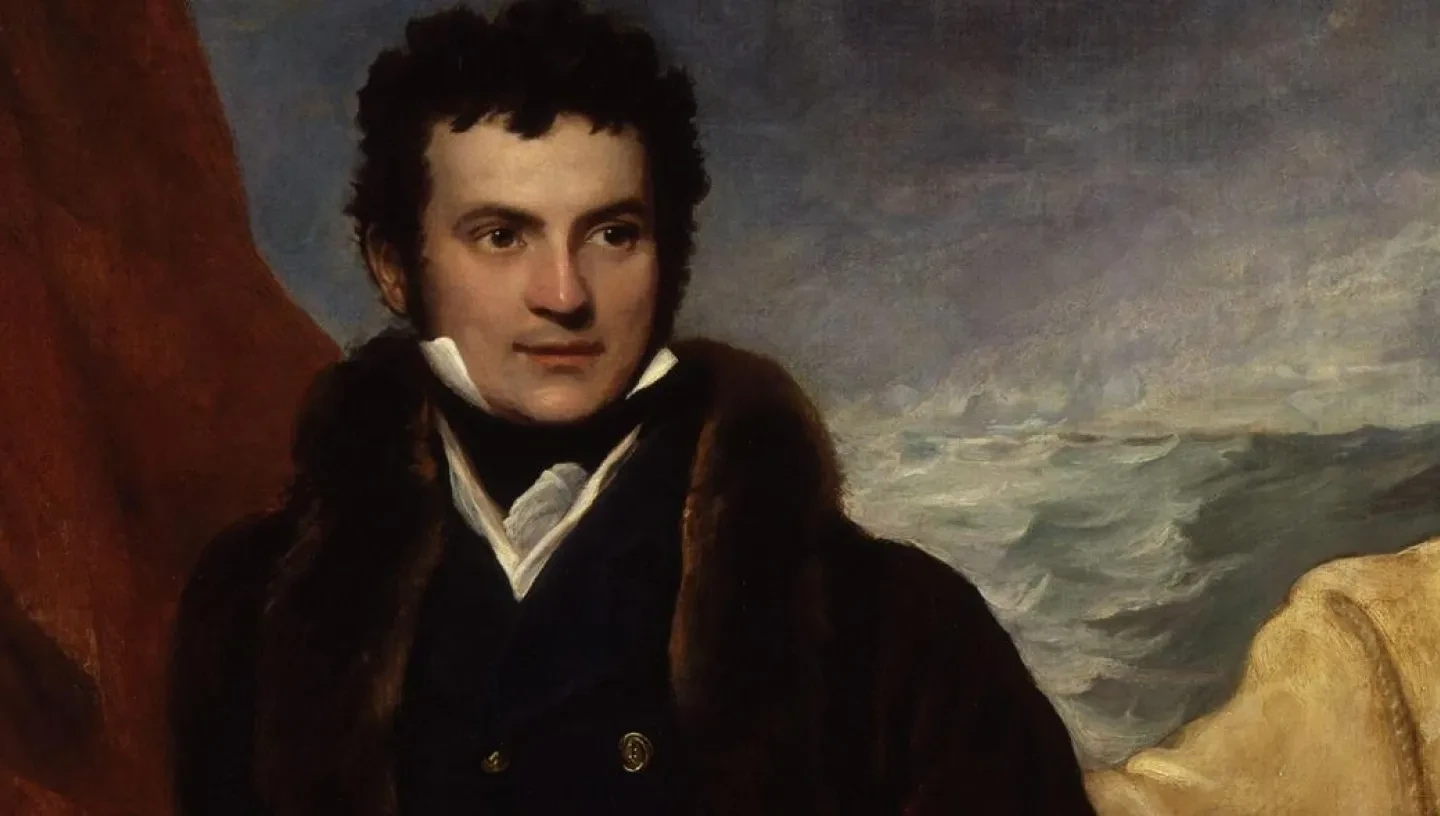
William Edward Parry first North-West Passage expedition 1819–20
William Edward Parry was a key figure in the discovery of the North-West Passage. On his first voyage he discovered a route through Lancaster Sound.
Parry's first voyage in 1819 was one of the most important in the exploration of the Passage - the seaway across the Arctic, linking the Atlantic and Pacific Oceans. On board the Hecla, with second-in-command Matthew Liddon on the Griper, Parry established that a westward route existed through Lancaster Sound – the very route that his predecessor, John Ross, had said was blocked. Parry also began to map the numerous islands through which the North-West Passage would have to be navigated.
The first voyage
Reaching Lancaster Sound, Parry discovered and named Prince Regent Inlet but it was blocked by ice. Moving on, the Hecla and Griper sailed on through Barrow Strait to Melville Island. In doing so the expedition earned a £5000 prize offered by Parliament for any voyage that crossed a longitude of 110° W. However, it would be some time before their reward could be collected.
Winter on Melville Island
The sea froze and Parry’s crew wintered on the south coast of Melville Island in the appropriately named ‘Winter Harbour’, where they stayed for 10 months. Parry was a great commander and kept his crew busy by putting on plays and starting a newspaper, the North Georgia Gazette and Winter Chronicle. During this time, he also led an expedition on foot across the island, naming the bay he found on the north side after the expedition’s two ships, Hecla Bay and Griper Bay. Parry demonstrated that, with enough provisions, a ship and crew could winter successfully above the Arctic Circle.
When the ice finally broke up, Parry attempted to push further westward towards Banks Island, but progress was painfully slow. Rather than risk another winter in the ice he returned to England.
Find out more about: